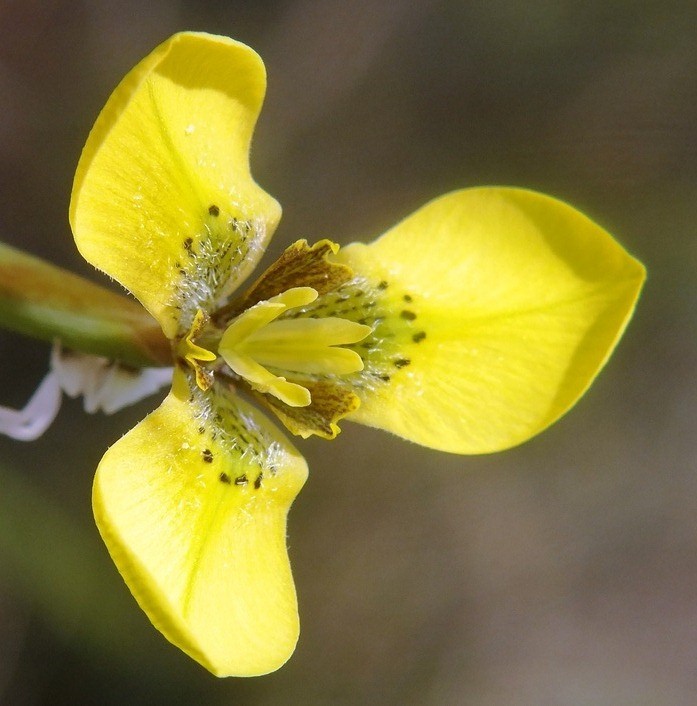Moraea bellendenii
(Moraea bellendenii)

Description
Moraea bellendenii is a species of plant in genus Moraea that was named after John Bellenden, the English botanist. It is common in the Western Cape on sandy slopes and flats, this yellow flowered cormous geophyte is usually 50 – 100 cm high, multi-branched, with a solitary leaf. The outer tepals of the flowers are 22 – 33 mm long and the inner tepals tricuspidate, 8 – 10 mm long. It flowers from October to November. Its distribution ranges in the Western Cape from Darling in the west to Plettenberg Bay in the East. It is closely related to Moraea tricuspidata. It was first described as Vieusseuxia bellendenii by Robert Sweet in 1826. In 1929 N. E. Brown revised the assessment of the species and authored it as "Morea Bellendeni" (now Moraea bellendenii). Moraea, the Cape tulips, is a genus of plants in the family Iridaceae, first described as a genus in 1758. The group is widespread across Africa, the Mediterranean, and central and southwestern Asia. The genus name is a tribute to the English botanist Robert More. Moraeas have iris-like flowers. The corms of some species have been used as food, however they are usually small and some species are unpleasant, and some are poisonous.
Taxonomic tree:







